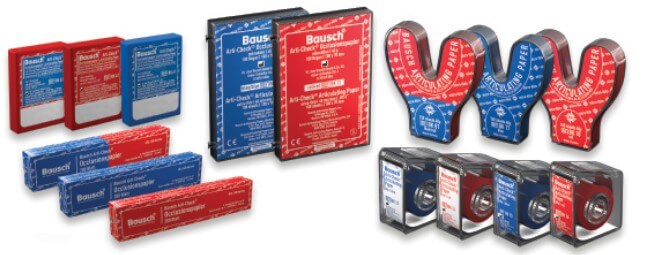Arti-Check: Accurate & Easy Occlusion Testing in Every Procedure
Micro-thin, tear-resistant articulating papers—coated with liquid colors on both sides—enable precise marking of all occlusal surfaces and interferences
Checking occlusion can be difficult, messy, and sometimes inaccurate, but it’s also one of the most essential steps toward ensuring high-quality patient care. With Bausch’s Arti-Check 40µ micro-thin articulating papers, clinicians find it easier to get an accurate read on their patients’ occlusion while avoiding the false or smear contacts that many have struggled with using other articulating papers.
According to Dr. Gary Dong, a Chicago-based dentist with 35 years’ in practice, the thinness of the articulating paper is an essential factor in registering occlusion. “You need a thin articulating paper in order to get an accurate bite and adjust high spots on restorations,” he said. “It needs to be thick enough not to tear, yet thin enough to be accurate.”

“The Arti-Check paper is very thin, but it does a good job of not tearing upon use or smearing, which results in very accurate markings.”
—Gary Dong, DDS
In the past, Dr. Dong had difficulty with papers that would easily tear or smudge. He discovered during the Dental Product Shopper product review of Arti-Check 40µ that it resolved those issues. “The Arti-Check paper is very thin, but it does a good job of not tearing upon use or smearing, which results in very accurate markings,” he shared. “I find it to be the best articulating paper in dentistry.”
Making Occlusal Analysis Easier
The Arti-Check 40µ articulating papers are coated with liquid colors on both sides, which clinicians see as a huge benefit in achieving accurate markings. The liquid coating consists of many color-filled micro capsules that are designed to burst with even slight masticatory pressure, releasing distinctly visible colors that allow dentists to plainly see where contact was made. The special coating ensures accurate marking of all occlusal contacts and interferences, including surfaces such as gold, ceramic, metal, or acrylic.
The Arti-Check 40µ papers are available in a precut horseshoe shape, which is helpful for patients who tend to bite unilaterally during the occlusion test. The papers come in plastic dispensers to make it easier for dentists to remove them with one hand, and they can be applied without the use of forceps.
The micro-thin papers are particularly useful for the 2-tone representation of static and dynamic occlusion. Clinicians first inspect the concentric contacts in red and then inspect the eccentric contacts in blue. The color sequence can be altered to each dentist’s preference.
“The red and blue colors are very useful when doing occlusal equilibration,” commented Dr. Dong. “I use the red side for centric bite and then the blue side to check lateral movements on the same arch. The colors do not smear and they work well, even in a moist environment.”
Dr. Dong noted that the papers serve multiple purposes, especially when communicating with denture patients. “I really like to use the paper for dentures, especially to demonstrate uneven occlusal wear on older dentures to the patients, who are often resistant to change dentures despite how worn they have become.”
Dr. Dong appreciated that Arti-Check paper is reusable and represents a good value. “It is a very accurate product that leaves very distinctive marks,” he said. “It works well on all types of restorations, including composites, zirconia, gold, and porcelain.”





